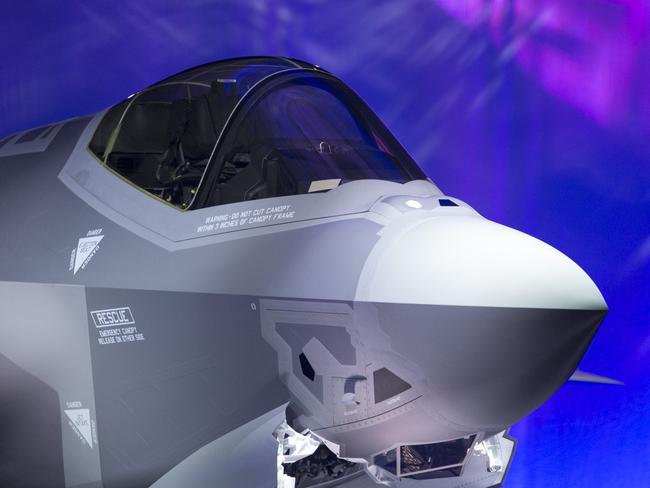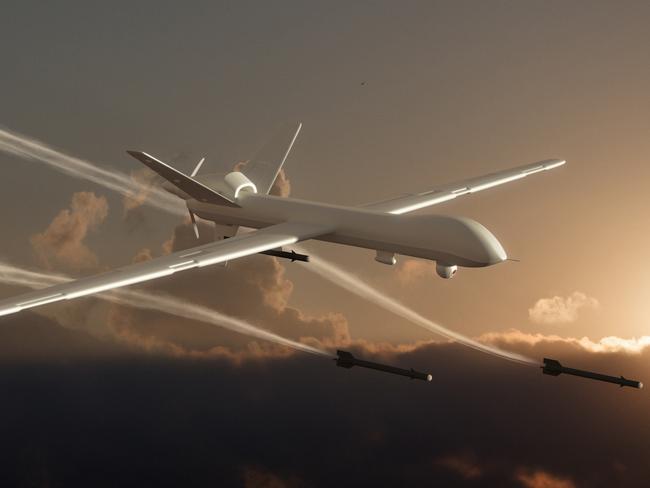US Air Force says ‘software’ will decide who wins future wars
FROM blocking enemy missiles mid-flight and using AI to help precision-guided weapons, there’s one crucial facet to warfare today.
FLYING the F-35 all the way to 2070, blocking enemy missiles in mid-flight and using AI to assist precision-guided weapons are all technologies that increasingly hinge upon rapid software development — inspiring Air Force leaders to say software will determine who wins future wars.
“In a future war, we could be changing software every day as a necessary factor for winning,” US Air Force assistant technology secretary Will Roper recently told reporters.
This modern phenomenon, where weapons systems are more computer-reliant, fosters a complex two-fold dynamic: it brings unprecedented combat advantages, yet also requires cyber-hardening networks and accelerating software modernisation.
Software upgrades, for instance, can give radar systems new threat information, provide improved seeker guidance for weapons and massively shorten sensor-to-shooter time by connecting otherwise disconnected networks and weapons platforms to one another in real-time.
Such technical advances, relying upon fast-emerging new computer algorithms, exponentially increase commanders’ ability to both see threats and attack enemies. All of this is fortified by growing applications of computer automation and AI.
“AI lives on getting software right,” Dr Roper said.
While explaining the Air Force’s effort to sharpen strategy on “agile software development,” Dr Roper cited a handful of fast-moving acquisition programs being infused with a faster software modernisation plan.
Using computer processing speed and real-time analytics, AI systems can instantly access millions of pieces of information, search for trends, draw parallels and provide otherwise disparate information sources to commanders in an organised, immediate fashion.
Such technological progress informs the technical basis for the F-35’s “sensor fusion,” wherein combat-relevant data from different sensors are synthesised for the pilot on a single screen.

The Air Force is looking to build upon what service scientists have described to Warrior Maven as early iterations of AI.
Alongside sensors, networks and weapons, software is also indispensable to the hugely impactful areas of sustainment, logistics and condition-based maintenance.
These areas, woven together as elements of focus, are the foundation upon which the Air Force seeks to build the F-35’s ability to fly until 2070.
The longevity, continued relevance and technical superiority of the F-35, pilots and weapons developers say, rests entirely on the extent to which it can sustain fast-paced modernisation.
At the same time, keeping the F-35 as the world’s premier fifth-generation fighter is not without a wide array of challenges. Politicians, members of the military and concerned observers have raised questions regarding cost challenges with the aircraft and the expected sustainment difficulties associated with it.
The Air Force’s plan to address this, Dr Roper explained, is to implement new pathfinder pilot programs for the F-35, based upon accelerated software modernisation. He cited new efforts with the F-35’s Autonomic Logistics Information System (ALIS) and the aircraft’s Mission Data Files threat library as areas of initial focus.
Quickly upgrading ALIS, a system which has had developmental complexities in recent years, can lower costs, improve the supply chain and greatly reduce the logistical burden.
Efficiently identifying anticipated points of potential mechanical failure not only improves mission security but streamlines aircraft repairs and sustainment.

Keeping upgrades aligned with new software and AI applications is aimed at ensuring the aircraft keeps flying and retains a technical advantage.
“ALIS is something we can work on to prove we can do a software drop every couple of weeks or every couple of months,” Dr Roper said.
Often referred to as condition-based maintenance, the idea is to expedite the process through which engines, propulsion systems, sensors and avionics may need to be maintained and improved.
Using ever-evolving forms of machine-learning, AI programs can compare new data with existing historical information to almost instantly identify systems in need of attention. Such apparatuses also provide the mechanisms through which rapid modernisation can take place.
When supplied with information, machine-learning programs enable computers to discern nuances, context and relevant patterns as a way to generate immediate breakthrough progress.
This kind of thing can give pilots real-time information about an aircraft failure or other pressing information, such as enemy locations.
Another application of software modernisation can enable fast upgrades to an F-35’s Mission Data Files. As an existing database of established threats in specific geographical regions, Mission Data Files help pilots quickly identify enemy aircraft by comparing sensor information against an existing data base.

Air Force engineers have been working on software upgrades to the F-35’s mission data files at Eglin Air Force Base in Florida. These kinds of rapid upgrades, entirely reliant upon new software, will enable pilots to quickly identify new enemy aircraft as they emerge — such as a Chinese J-20 fifth-generation stealth fighter.
This article originally appeared on Fox News and was reproduced with permission.



